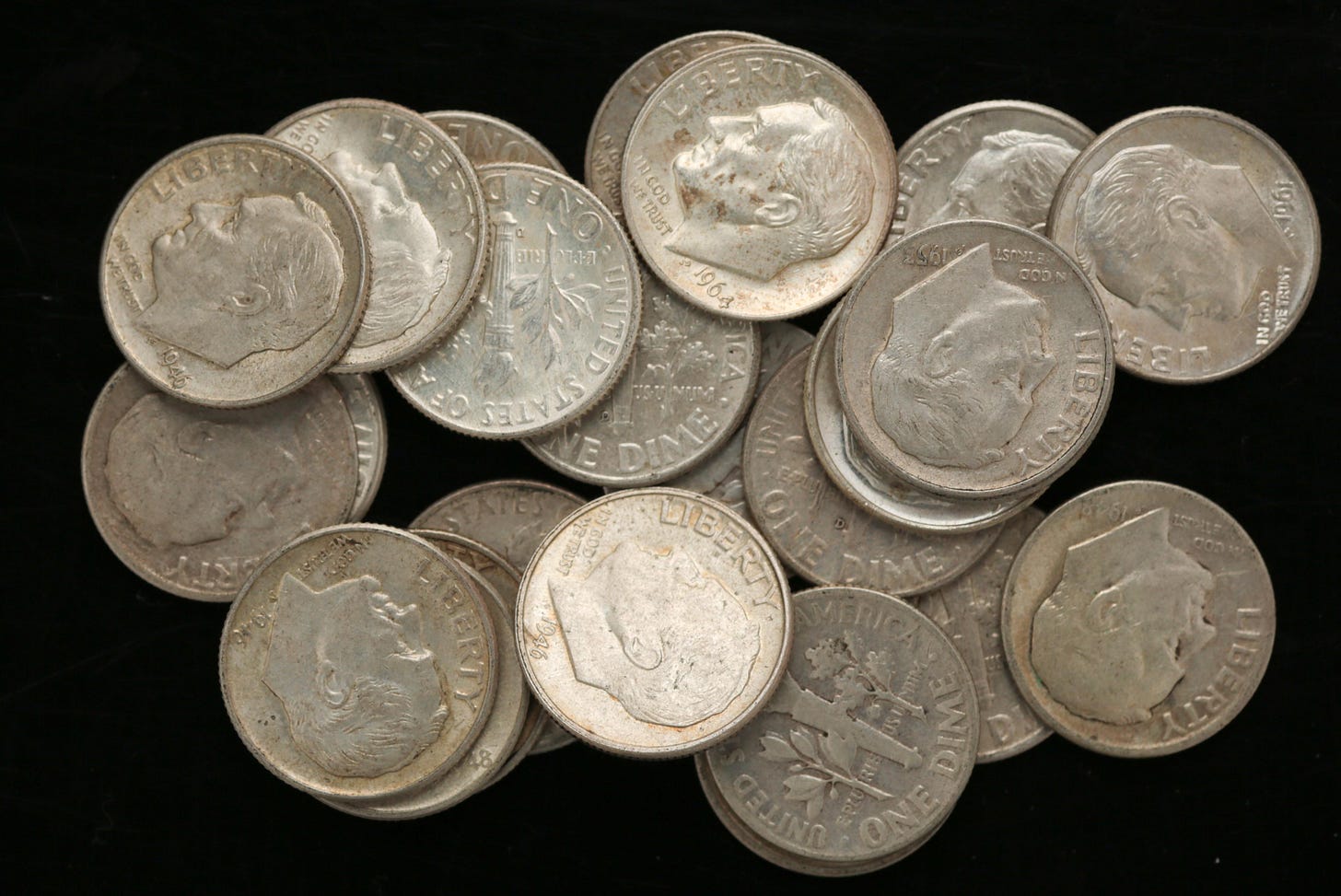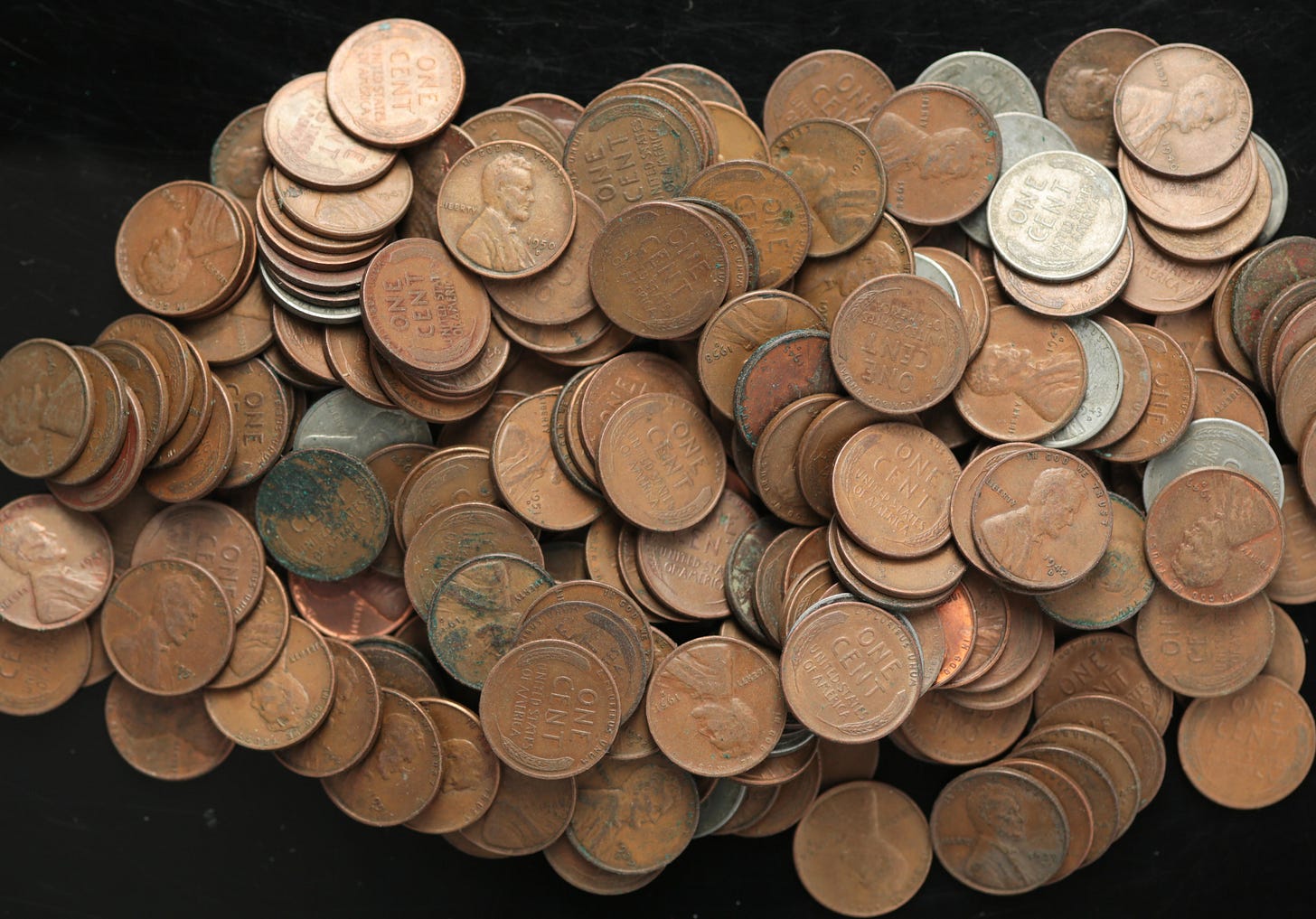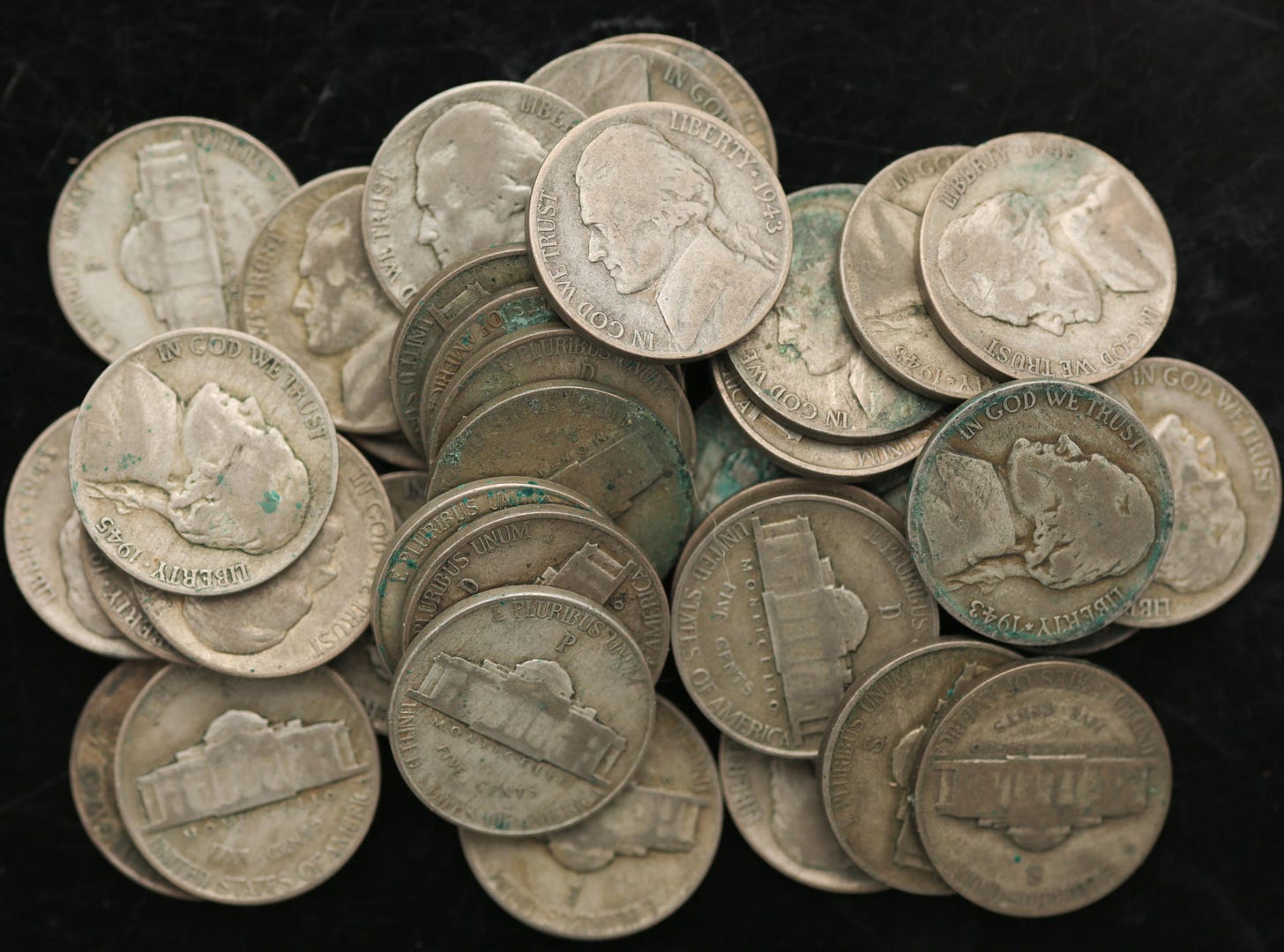Recently, I posted pictures of coins that I had shot for an up-coming auction. That post (here) was focussed on the detail needed to show the coins at their best. I have a favorite lens that I use when I shoot very close, a Zeiss Makro-Planar 100mm f2. This post is also about shooting coins, using the same lens, but here, I am drawing your attention to the 3-D effect created by the lens.
This collection of dimes has a face value of $2.50. They are dimes that are all from 1964 and before. This is significant because, after 1964, the U.S. Mint changed the composition of all silver coins to a much less valuable alloy. Coins from 1964, and before, contain 90% silver. Today, U.S. “Silver” coins are less than 40%. What this means, for these coins, is that the value of the silver in each coin is worth close to $1.50. There is little numismatic value for this collection of coins, so I am only concerned with showing that they are pre-1964 coins. I am not lookin to spend any significant amount of time posing, or arranging these coins. These coins took me much less than 60 seconds to shoot. But, the value of the coins is, not strictly speaking, the point os this post; the point is the perception of depth.
This pile o’ pennies, has a face-value of $2.50. I shot these coins on a flat-lay table. My camera was suspended directly above the coins, perfectly perpendicular to the plane on which they are displayed. I mention this to let you know that I did not use a slight angle to fake a sense of depth (which is an old trick in the world of photography). This sense of depth comes from the lens.
Zeiss lenses are known for this 3-D effect. To be honest, I don’t know why this is true (specifically for Zeiss lenses), which is to say, I haven’t read up on what makes this happen. I could, but I don’t want to, at the moment. When I was looking around for a good macro lens, the 100mm focal length was almost always mentioned as an outstanding choice. The Zeiss, 100mm f2 Makro-Planar, was often mentioned in hushed, and reverent tones. I had an opportunity to buy one used (it cost a bundle!) and I have never regretted that decision.
If you can zoom in on this picture of the quarters, you can see that 3-D effect clearly. Each coin is almost perfectly positioned at the same distance from the lens as its neighbor, but the whole line of coins seems to be lifting off the screen. The effect is enhanced by the coins being in a straight line. It’s a bit of an optical illusion, as we typically look from left to right (same as though we were “reading” the coins), the coins look as though they “warp” up off the screen.
In all three of these pictures, the 3-D effect is seen, even though virtually all of the coins ore in focus. A shallow depth of field can sometimes give you the perception of depth by forcing the eye to look at the part of the shot that is is focus, because the rest of the shot fades out of focus.
Here is that shallow depth of field effect seen in the coins:
This stack of nickels grew just high enough that the depth of field effect grew more pronounced. You are looking at a two-dimensional picture but the 3-D effect is easily seen. When I look at a photograph with this effect, I think of the revolution that occurred for renaissance painters when they discovered how to create the perception of depth in their 2-D paintings.
I think that it was Filippo Brunelleschi, who pioneered the use of one point, linear perspective, in Italian painting. I can imagine him, sitting at his easel, painting a cityscape, when the first person to see the new technique walks up and says something like, Dude…!!??
I always look forward to shooting coins, because I geek out on this 3-D effect. Nerds of the world, Unite!






I appreciate your macro talk. I have a Olympus M.Zuiko 60mm f/2.8. Olympus (now OM Systems -- what a shitty brand name!) recently released a 90mm. With a 2x full frame equivalency, we are talking 120mm and 180mm respectfully. The 60 has 7.5" min focal distance, and the 90 has a 8.5". Being able to pull back an extra inch or two from tiny subjects without compromising the framing is HUGE in the macro world. I constantly bump my subjects as I try to acheive full 1:1 focus with my 60mm. But...i can't justify the $1300 price tag to gain those two inches! I need now to look again to see of any "3D" effect from the lens.